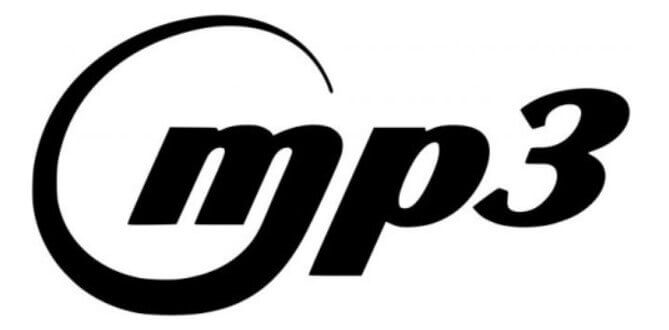The main differences between MP3 and AAC at a glance: audio file size, quality, compatibility, and popularity.
Referring to MP3, it is generally referred to as “format”. To be more precise, MP3 is a lossy audio compression algorithm capable of significantly reducing the amount of data required to store a sound while maintaining the quality at an acceptable level compared to that of the original.
In recent days, many online newspapers have mistakenly celebrated the “death” of the MP3 format. The Fraunhofer Institute has simply confirmed that its patents on the technology behind the operation of MP3 have expired.
The MP3 format, therefore, is far from dead: indeed, it can now enjoy a second youth thanks to the conclusion of the licensing program managed by Fraunhofer.
The Fraunhofer institute requested the producers to pay royalties to use the MP3 encoding and playback functions. Still, it used the money received in its coffers to develop innovative projects and invest in research in the telecommunications sector, using technologies based on the use of lasers and molecular biology.
In April 2017, all Fraunhofer patents relating to the MP3 format also expired in the United States (in Europe, they had reached their “end of life” as early as 2012).
MP3 can become even more popular
The MP3 format is anything but on the avenue of the sunset. The fact that Fraunhofer’s patents have expired could encourage wider adoption of the format.
Due to the royalties required by Fraunhofer, most of the free software has embraced support for the MP3 format ” out-of-the-box,” that is, allowing its installation by the user as separate components.
This happened, for example, for the most well-known distributions such as Linux or for applications such as Audacity, which suggested, for example, the installation and use of the LAME encoder (released in May 2000 as a stand-alone project, under the LGPL license).
In recent years, various streaming music services have been born: it has become completely impractical to use lossless compression (i.e. without losing any part of the original information during the compression/decompression phase of the data) with high bitrates.

Spotify uses the free, patent-free, Ogg Vorbis algorithm, while Apple Music leans on the proprietary AAC ( Advanced Audio Coding ) format.
These are all lossy algorithms in which some loss of information occurs; the FLAC ( Free Lossless Audio Codec ) format remains “the king” of lossless audio compression.
However, dozens of online stores continue to sell music in MP3 formats, such as Amazon, Google Play, Bandcamp, etc.
Of course, one day, the MP3 format will be abandoned by them, but it won’t be due to a patent issue when it does.
Differences between MP3 and AAC
MP3 has completely revolutionized the world of music. By encoding an audio track as MP3, it has become possible to store hundreds of music tracks in a single CD and any storage medium.
By adjusting the bitrate during encoding, users can create MP3 files by finding the right compromise between quality and file size.
The “minimum wage” of 128 kbps (even if it is possible to lower the bitrate still) does not even remotely guarantee the quality of a CD-Audio even if, in many cases, the result obtained can be considered acceptable (especially if the size is taken into account of the file).
Only with MP3 files encoded at 256 kbps can we speak of high fidelity.
Much also depends on the encoder’s quality: we have said that MP3 is a lossy compression algorithm. This means that performing a compression operation eliminates some of the information that distinguishes the original audio.
Therefore, the effectiveness of the algorithm used to compress has a fundamental importance, especially if the attention is directed towards those sounds that cannot be detected by the human ear or that are perceived to an extremely reduced extent.
As of 1993, the MP3 format ( MPEG-1 Layer 3) lived a life of its own, separate from MPEG-1/2. MPEG-1, now abandoned, was used for Video CDs, and by “old-time” satellite networks, MPEG-2 remained the encoding standard for DVDs.
And it was in 1997 that a group of MPEG experts came up with the acronym MP3.
The MPEG-4 format, released later, is the one that in the video field is still dominating the scene today (it is also used in Blu-Ray media).
In terms of popularity, MP3 is unrivaled: from 1993 to the present, when almost 25 years have passed – a geological era in technology – it is still the format “to beat”.
However, AAC is growing thanks rapidly, primarily to its better efficiency than MP3.
AAC is not, however, a “novelty” of these years: it is only four years younger than MP3 and began to establish itself about ten years ago.
In terms of compressed file size, AAC allows for slightly smaller objects than MP3.
“Spannometrically”, a piece of music that weighs 10 MB in MP3 can have dimensions in AAC that do not exceed 8 MB.
Considering the gigabyte cost of current hard disks, this is not a huge advantage, but it can become significant when you pay handsomely for the space purchased on the cloud.
Although AAC files take up less space than MP3s, the scale leans heavily in favor of AAC in terms of sound quality.
While encoding the file, AAC can sample many more frequencies and manage those above 16 Hz more effectively.
In terms of compatibility, MP3 remains unsurpassed at the moment: any device capable of playing music is capable of handling this. Format.
AAC is not yet so “ubiquitous,” but mainly under Apple’s pressure (which supports it in iPhone, iPod, iTunes, and so on), the format is becoming more and more popular.
In terms of extensions , MP3 only comes as an .mp3 filewhile AAC like .m4a, .m4b, .m4p, .m4v, .m4r, .3gp, .mp4, .aac .
AAC is the future, but MP3 is alive and well.

A tech-savvy writer with a knack for finding the latest technology in the market, this is what describes John Carter. With more than 8 years of experience as a journalist, John graduated as an engineer and ventured soon into the world of online journalism. His interest includes gadget reviews, decoding OS errors, hunting information on the latest technology, and so on.













